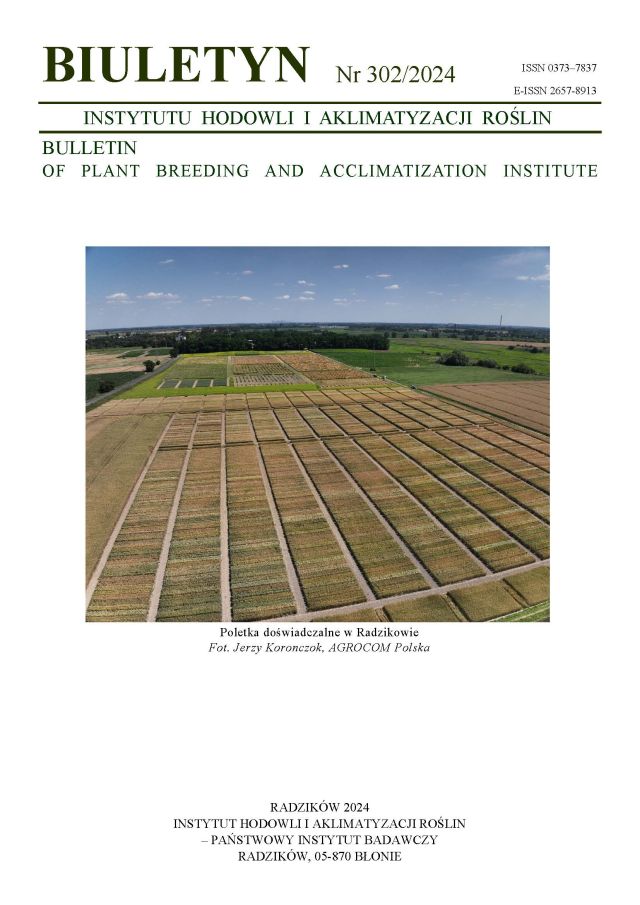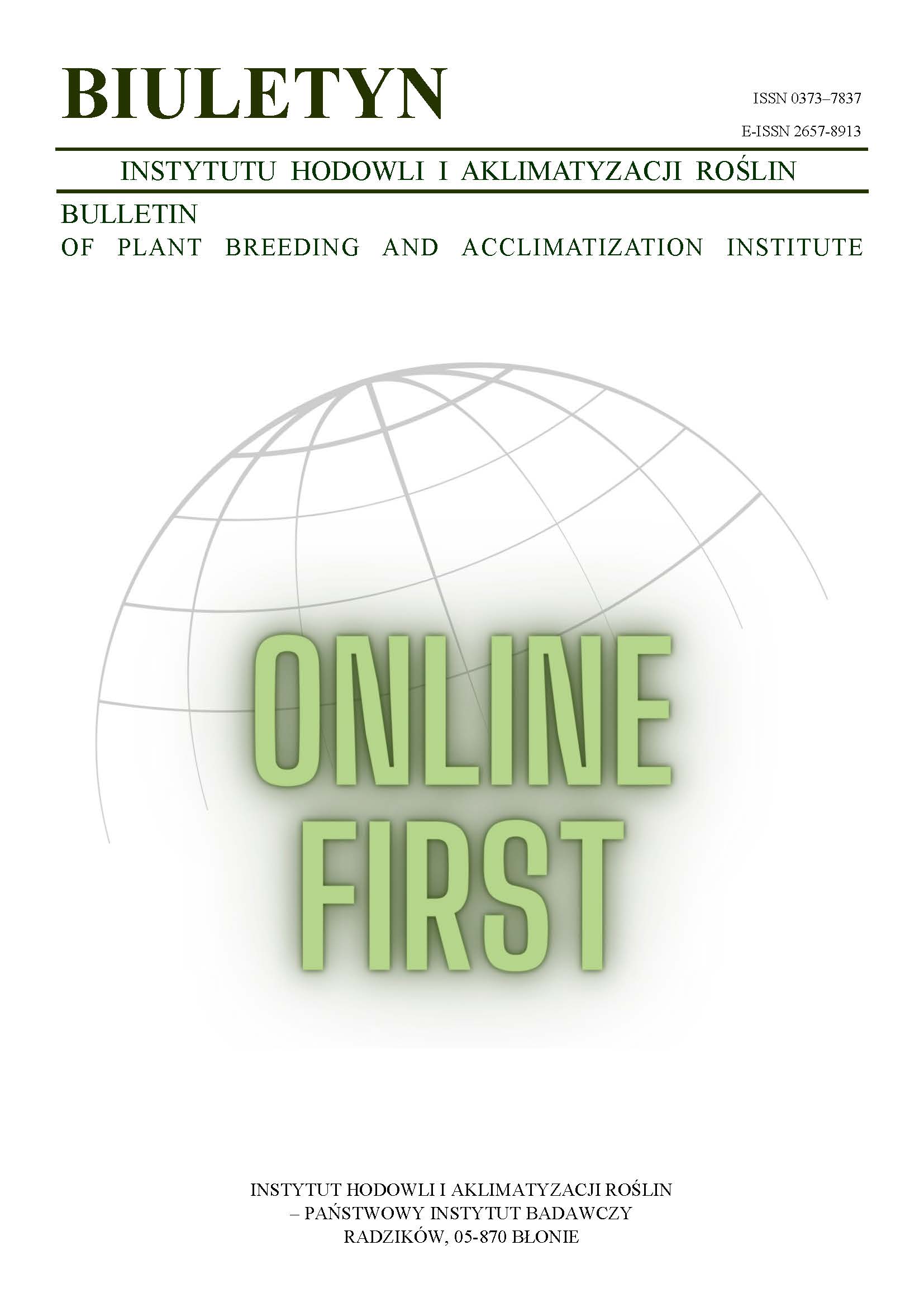The range of variation and correlation among technological traits in three large-fruited cultivars of pepper (Capsicum annuum L.)
Lubosława Nowaczyk
biuro.dziekana.wrib@pbs.edu.plAkademia Techniczno-Rolnicza w Bydgoszczy (Poland)
Paweł Nowaczyk
Akademia Techniczno-Rolnicza w Bydgoszczy (Poland)
Abstract
The level and uniformity of technological traits of the raw have a great significance for fruit processing. In the study, the fruits of three large-fruited cultivars of pepper (Capsicum annuum L.) were characterized. A level and range of variation of fruit weight, biological weight and performance as well as weight of cross-walls, their share in fruit weight and a number of chambers, were examined. The mean fruit weight ranged from 291 g in cv. Luba and 221 g in cv. Mino to 167 g in cv. Sono. Biological performance, i.e. the proportion of edible parts in the fruit weight, reached the highest level (88.2%) in cv. Mino. The greatest share of cross-walls, reaching 2.6% of fruit weight, was observed with cv. Sono. The investigated cultivars differed in the coefficients of variation for fruit traits. The highest level of fruit uniformity was characteristic of cv. Mino. In addition, significant positive relations between the mean and biological weight of fruit as well as between the cross-walls weight and the number of chambers were found. The correlation between the biological weight of fruit and the share of cross-walls was negative.
Keywords:
biological performance, biological weight, correlation, cross-walls weight, variationReferences
Buczkowska H. 2004. Wpływ zagęszczenia roślin na wzrost i plonowanie papryki słodkiej odmiany ‘Mino’. Folia Univ. Agric. Stetin. 239 (95): 27 — 32.
Google Scholar
Cebula S. 1989. Comparison of sweet pepper cultivars in the relation to vegetative growth, quantity and quality of yield in greenhouse conditions. Folia. Hort. I/2: 3 — 15.
Google Scholar
IPGRI. 1995. Descriptors for Capsicum (Capsicum spp.). International Plant Genetic Resources Institute, Roma, Taipei, Costa Rica: 1 — 49.
Google Scholar
Kmiecik W., Lisewska Z. 1994. Evaluation of eight sweet pepper cultivars for field growing in the Kraków region from the aspect of requirements of the conning industry. Folia Hort., Ann. Vi / 2: 35 — 43.
Google Scholar
Nowaczyk P., Nowaczyk L. 2001. The quality features and the fertility of pepper (Capsicum annuum L.) initial forms. In: Abak K., Buyukalaca S & Dasgan Y (eds), Genetics and Breeding of Capsicum and Eggplant, Gurgul Ofset, Adana, Turkey: 53 — 56.
Google Scholar
Nowaczyk L., Nowaczyk P. 2004. Współzależność wydajności biologicznej owoców i płodności u mieszańców F1 papryki rocznej (Capsicum annuum L.). Folia Univ. Agric. Stetin. 239: 271 — 274.
Google Scholar
Authors
Lubosława Nowaczykbiuro.dziekana.wrib@pbs.edu.pl
Akademia Techniczno-Rolnicza w Bydgoszczy Poland
Authors
Paweł NowaczykAkademia Techniczno-Rolnicza w Bydgoszczy Poland
Statistics
Abstract views: 58PDF downloads: 23
License
Copyright (c) 2006 Lubosława Nowaczyk, Paweł Nowaczyk

This work is licensed under a Creative Commons Attribution-ShareAlike 4.0 International License.
Upon submitting the article, the Authors grant the Publisher a non-exclusive and free license to use the article for an indefinite period of time throughout the world in the following fields of use:
- Production and reproduction of copies of the article using a specific technique, including printing and digital technology.
- Placing on the market, lending or renting the original or copies of the article.
- Public performance, exhibition, display, reproduction, broadcasting and re-broadcasting, as well as making the article publicly available in such a way that everyone can access it at a place and time of their choice.
- Including the article in a collective work.
- Uploading an article in electronic form to electronic platforms or otherwise introducing an article in electronic form to the Internet or other network.
- Dissemination of the article in electronic form on the Internet or other network, in collective work as well as independently.
- Making the article available in an electronic version in such a way that everyone can access it at a place and time of their choice, in particular via the Internet.
Authors by sending a request for publication:
- They consent to the publication of the article in the journal,
- They agree to give the publication a DOI (Digital Object Identifier),
- They undertake to comply with the publishing house's code of ethics in accordance with the guidelines of the Committee on Publication Ethics (COPE), (http://ihar.edu.pl/biblioteka_i_wydawnictwa.php),
- They consent to the articles being made available in electronic form under the CC BY-SA 4.0 license, in open access,
- They agree to send article metadata to commercial and non-commercial journal indexing databases.
Most read articles by the same author(s)
- Paweł Nowaczyk, Marta Orlińska, Variability and correlations between some traits of globe artichoke cultivars (Cynara scolymus L.) , Bulletin of Plant Breeding and Acclimatization Institute: No. 249 (2008): Regular issue
- Paweł Nowaczyk, Lubosława Nowaczyk, Utilization of Capsicum spp. S allel on genetic research and for creation of original processing material , Bulletin of Plant Breeding and Acclimatization Institute: No. 283 (2018): Special issue
- Paweł Nowaczyk, Lubosława Nowaczyk, The range of variation and correlation of the soft flesh fruit traits in interspecific hybrids Capsicum frutescens L. × Capsicum annuum L. , Bulletin of Plant Breeding and Acclimatization Institute: No. 240/241 (2006): Regular issue














